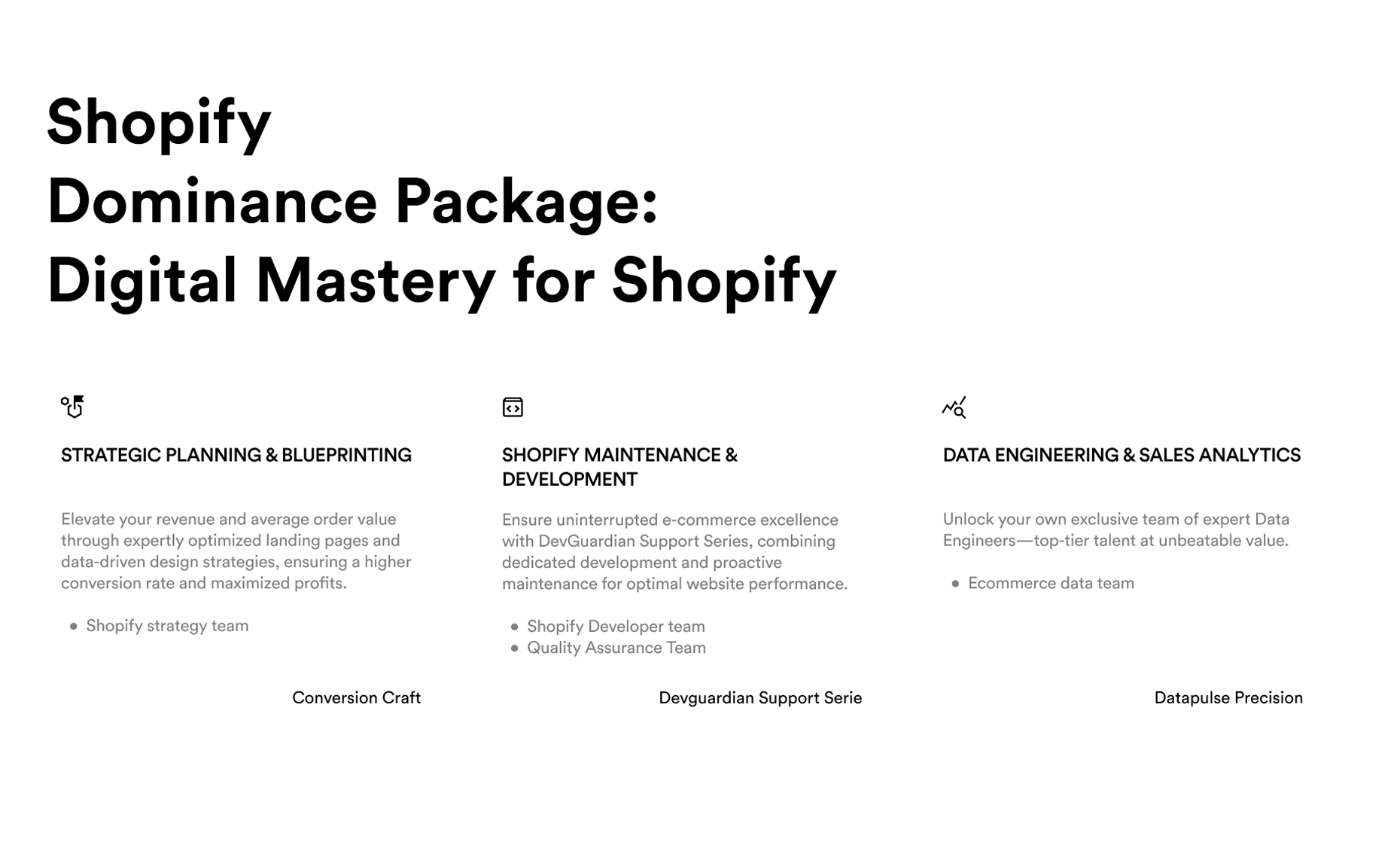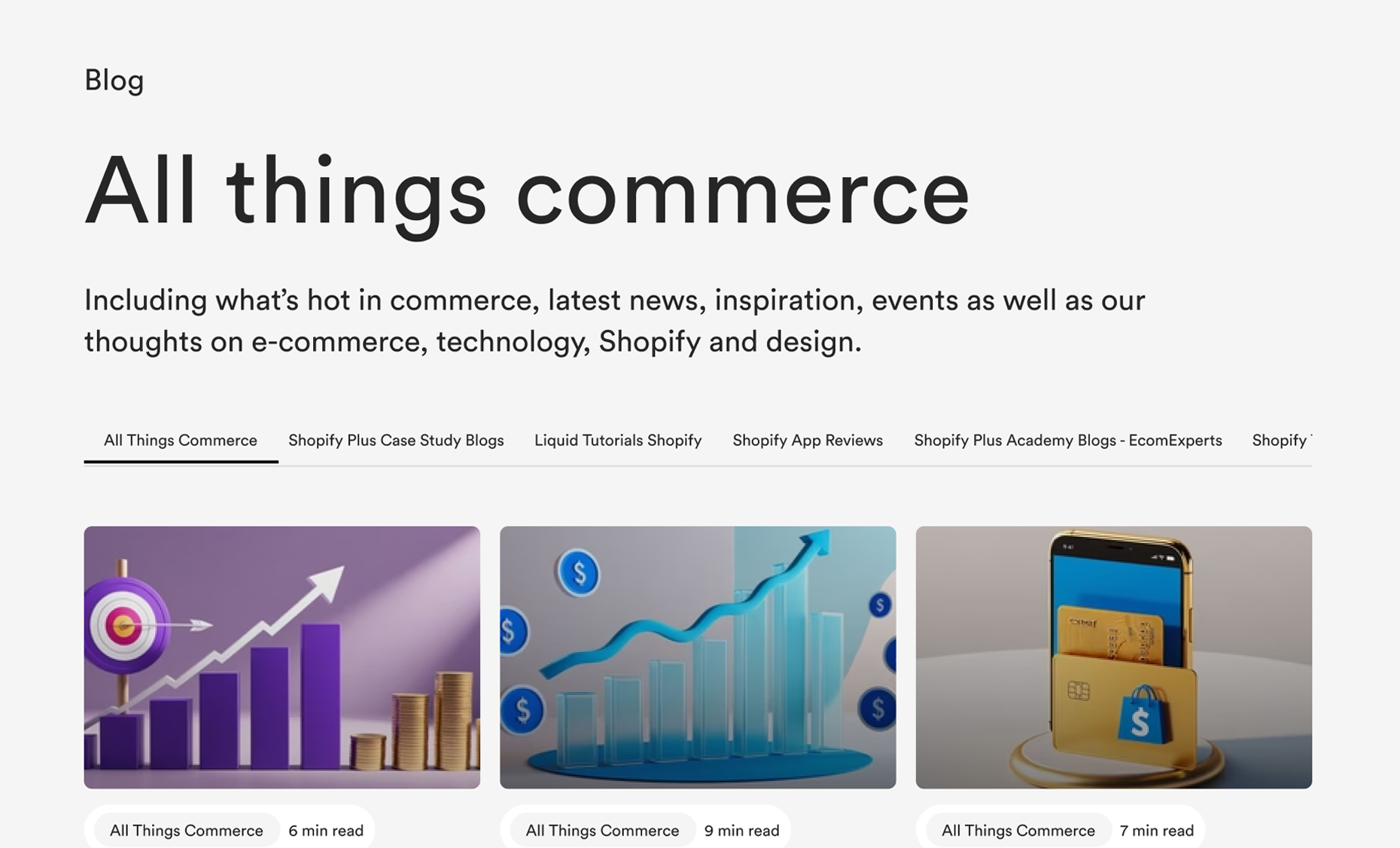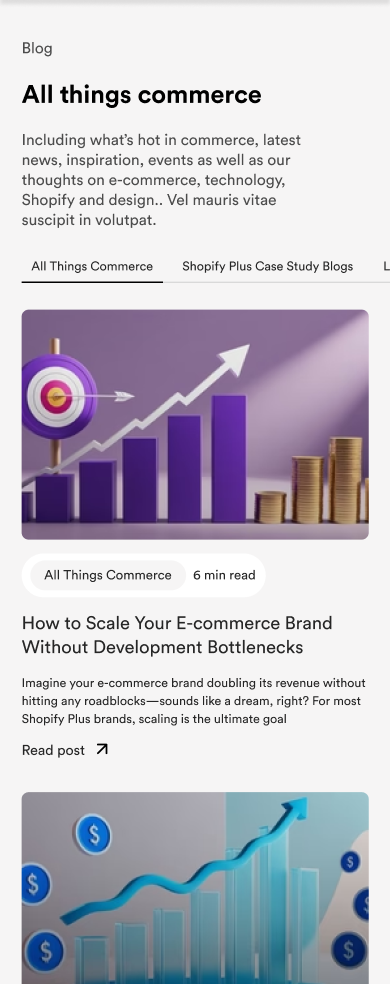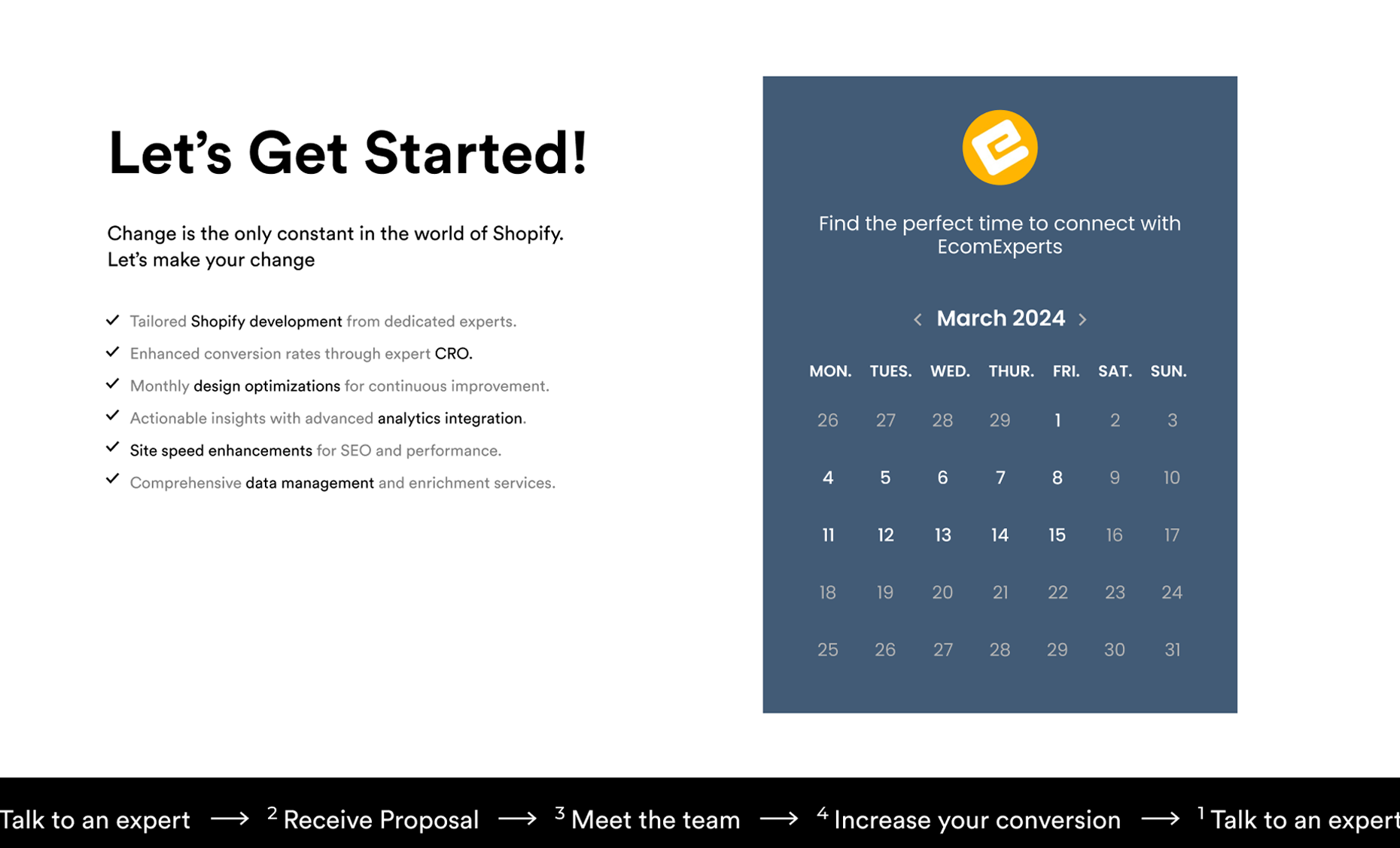Why Preparing Your Shopify Store for the Holiday Season is Crucial
Let’s cut to the chase: The 2024 holiday season is going to be huge. We’re talking about a potential $271.58 billion in U.S. retail e-commerce sales.
If you’re not ready to grab your slice of that pie, someone else will. This isn’t just about being ready; it’s about dominating. Black Friday, Cyber Monday (BFCM), and Christmas aren’t just dates on a calendar—they’re your shot at turning this year’s hard work into serious revenue.
The Impact of the Holiday Season on eCommerce
Listen, BFCM isn’t just a shopping event anymore; it’s a global phenomenon. Last year, Shopify merchants raked in $7.5 billion over the BFCM weekend.
This year? The sky’s the limit. But here’s the deal: if your site isn’t optimized, you’re basically throwing money away.
Slow-loading pages? Complex checkouts? Kiss those sales goodbye. That’s why you need to be running a site speed test like yesterday. A fast, seamless experience isn’t just nice to have—it’s mandatory if you want to crush it this season.
Optimizing Your Shopify Store for Mobile Shopping This Holiday Season
The Growing Importance of Mobile Commerce During BFCM

Let’s face it—mobile commerce (m-commerce) is dominating the e-commerce landscape, and if you’re not paying attention, you’re already behind. By the end of 2024, mobile commerce is expected to account for nearly 28% of total e-commerce sales during the holiday season.
This surge is driven largely by shopping events like Black Friday and Cyber Monday (BFCM), where mobile traffic skyrockets as consumers hunt for deals on the go.
Why is this important? During BFCM, traffic on your Shopify store could hit levels you’ve never seen before. If your site isn’t optimized for mobile, those potential customers will bounce—and fast. A site that’s slow, clunky, or difficult to navigate on a mobile device is a conversion killer. This is why mobile optimization isn’t just important; it’s crucial. It’s the difference between converting a curious shopper into a buyer or losing them to a competitor.
1. Enhancing Mobile Checkout for the Holiday Season
The checkout process is one of the most critical aspects of your mobile site. A smooth, fast, and user-friendly checkout experience is crucial to reducing cart abandonment, especially during BFCM when consumers expect quick transactions.
Here’s what to focus on:
- Simplify Navigation: Make the checkout process straightforward by minimizing the number of steps required to complete a purchase. Fewer steps mean fewer opportunities for customers to abandon their carts.
- Reduce Steps: Aim for a single-page checkout if possible, or at least provide clear progress indicators so customers know how close they are to completing their purchase.
- Integrate Mobile Payment Options: Offering mobile payment options like Apple Pay and Google Pay can significantly speed up the checkout process and improve the overall user experience, leading to higher conversion rates.
2. Leveraging Personalized Push Notifications
During the holiday season, personalized push notifications can be a powerful tool for driving engagement and conversions. By targeting customers with relevant, timely messages, you can re-engage them and encourage purchases.
Consider the following strategies:
- Segment Your Audience: Use data to segment your audience based on behavior, preferences, and past purchases. This allows you to send targeted notifications that are more likely to resonate with each customer.
- Craft Compelling Messages: Ensure that your notifications are not only personalized but also create a sense of urgency. For example, highlighting a limited-time offer during BFCM can prompt customers to act quickly.
These strategies are designed to help you maximize your Shopify store’s mobile potential during the holiday season. With proper mobile optimization, you’ll be well-prepared to handle the influx of traffic and convert more visitors into loyal customers.
Leveraging AI-Powered Personalization for a Successful Holiday Season on Shopify
Why AI is a Game-Changer for Holiday Season Sales
Artificial Intelligence (AI) is quickly becoming a critical tool in the e-commerce world, especially during peak shopping periods like Black Friday and Cyber Monday (BFCM). With AI, you can provide your customers with highly personalized shopping experiences that can significantly boost your sales during the holiday season.
- Personalized Shopping Experiences: AI allows you to deliver tailored experiences to your customers by analyzing their browsing history, purchase behavior, and even the time they spend on certain products. This level of personalization can result in higher conversion rates, as customers are more likely to purchase products that feel handpicked just for them.
- Inventory Management: AI can help manage your inventory more effectively by predicting which products will be in high demand during BFCM. By analyzing trends and customer behavior patterns, AI can forecast demand, helping you avoid stockouts or overstock issues, both of which can impact your profitability.
- Targeted Marketing Campaigns: AI also enhances your marketing efforts by enabling more precise customer segmentation. This means you can deliver personalized email campaigns, social media ads, and other marketing messages that resonate more deeply with individual customers, leading to higher engagement and conversions.
AI Solutions for Shopify Merchants
AI-powered solutions can supercharge your Shopify store’s performance during the holiday season. Here’s how you can leverage AI to optimize your operations and boost sales.
1. AI-Driven Product Recommendations
Imagine a customer browsing your store during BFCM and seeing product recommendations that feel like they were made just for them. AI-driven product recommendations work by analyzing a customer’s browsing history, purchase patterns, and the behaviors of similar customers to suggest products that are highly relevant. This can lead to significant increases in average order value (AOV) and overall sales.
2. Predictive Analytics for Inventory Management
Managing inventory during BFCM is a challenge, but AI-powered predictive analytics can make it easier. By analyzing historical sales data, current trends, and customer behavior, AI can help you predict which products will be in high demand. This allows you to optimize your inventory levels, reducing the risk of stockouts on popular items while minimizing excess inventory.
3. Personalized Marketing Campaigns
Generic marketing messages don’t cut it during BFCM. AI enables you to create highly personalized marketing campaigns that speak directly to your customers’ needs and desires. By segmenting your audience based on behavior, preferences, and purchase history, you can craft targeted emails, social media ads, and other marketing materials that drive engagement and conversions during the holiday season.
Harnessing the Power of Social Commerce and Livestream Shopping for BFCM

The Rise of Social Commerce During the Holiday Season

Social media platforms have evolved into critical shopping destinations, particularly during the holiday season. Black Friday and Cyber Monday (BFCM) are prime examples of how these platforms become central hubs for discovering and purchasing products. In 2024, social commerce is expected to generate over $35 billion in sales, highlighting its growing importance in the eCommerce landscape.
During BFCM, consumers flock to platforms like Instagram, TikTok, and Facebook to find the best deals and discover new products. These platforms are not only places to connect with friends but also spaces where brands can engage directly with consumers, offering shoppable content that simplifies the purchasing process.
- Social Commerce Boom: Social media has become a key channel for brands to reach consumers, with integrated shopping features making it easier than ever for users to buy products directly from their feeds. This seamless shopping experience is particularly appealing during high-traffic events like BFCM when consumers are looking for quick and convenient ways to shop.
- Livestream Shopping: Livestream shopping is another powerful tool that combines entertainment with real-time shopping opportunities. Livestream events, where influencers or brand representatives showcase products live, allow for interactive engagement with potential buyers. During BFCM, these events can create a sense of urgency and exclusivity, driving immediate sales as viewers make purchases directly through the livestream.
Strategies for Leveraging Social Commerce
To capitalize on the potential of social commerce and livestream shopping during BFCM, brands need to adopt strategic approaches that align with their audience’s behaviors and preferences.
1. Creating Shoppable Content
Creating engaging, shoppable content is essential for turning social media followers into customers. Integrating your Shopify store with platforms like Instagram and TikTok allows you to tag products directly in posts and videos, making it easy for followers to shop your feed.
Here are some key strategies:
- Integration with Social Platforms: Set up and optimize your Shopify store’s integration with social media platforms to enable features like Instagram Shopping and TikTok Shopping. These tools allow users to browse and purchase products seamlessly within the app, providing a frictionless shopping experience.
- Crafting Engaging Content: Focus on creating compelling content that resonates with your audience. Whether it’s a carousel post on Instagram showcasing holiday gift ideas or a TikTok video highlighting a BFCM flash sale, the goal is to create content that not only grabs attention but also encourages conversions.
2. Hosting Livestream Shopping Events
Livestream shopping is a powerful way to showcase products in real-time, engage with your audience, and drive immediate sales. These events are particularly effective during BFCM, when consumers are actively looking for deals and unique shopping experiences.
Consider the following approaches:
- Event Planning and Promotion: Plan and promote your livestream shopping events well in advance to maximize attendance. Select the right platform, such as Instagram Live, Facebook Live, or a dedicated eCommerce platform that supports live shopping, and use social media and email marketing to build anticipation.
- Real-Time Engagement: During the event, focus on engaging with your audience by answering live questions, offering limited-time discounts, and showcasing your products dynamically. This interactive experience can help build a deeper connection with your audience and encourage immediate purchases.
- Post-Event Follow-Up: After the livestream, follow up with attendees through personalized emails, retargeting ads, and social media posts to maintain momentum and drive additional sales.
By leveraging the power of social commerce and livestream shopping, brands can tap into the massive opportunities presented by BFCM. These strategies are designed to enhance customer engagement, increase sales, and build brand loyalty during one of the busiest shopping periods of the year.
Implementing Sustainable Practices for the 2024 Holiday Season
The Growing Demand for Sustainability During the Holiday Season
In recent years, consumer demand for sustainability has skyrocketed, and the 2024 holiday season is no exception. As shoppers become more environmentally conscious, they’re increasingly seeking out brands that prioritize sustainable practices. In fact, a recent survey found that 76% of global consumers are more likely to buy from brands that demonstrate a commitment to ethical sourcing and sustainability.
This trend is particularly relevant during the holiday season, when the environmental impact of increased production and consumption is most evident.
For eCommerce businesses, implementing sustainable practices is no longer just a nice-to-have—it’s a critical component of staying competitive. During high-traffic shopping events like Black Friday and Cyber Monday (BFCM), showcasing your commitment to sustainability can set your brand apart from the competition and attract environmentally conscious consumers.
Strategies for Implementing Sustainable Practices
To effectively tap into the growing demand for sustainability during the holiday season, consider implementing the following strategies:
1. Sustainable Packaging Solutions
One of the most visible ways to demonstrate your commitment to sustainability is through your packaging. Traditional packaging materials contribute significantly to environmental waste, but there are more eco-friendly alternatives available that can help reduce your brand’s carbon footprint.
- Use Recycled and Biodegradable Materials: Switch to packaging materials made from recycled content, such as recycled cardboard, paper, or biodegradable plastics. These materials not only reduce waste but also resonate well with consumers who are increasingly concerned about the environmental impact of their purchases.
- Minimize Packaging: Aim to reduce the amount of packaging used for each product. This not only lowers costs but also decreases the environmental impact. Consider using smaller, more efficient packaging designs that require less material while still protecting the product during shipping.
- Communicate Your Efforts: Make sure your customers know about your sustainable packaging practices. Include information on your website, product pages, and even on the packaging itself. This transparency can enhance your brand’s image and build trust with eco-conscious shoppers.
2. Promoting Eco-Friendly Products
During the holiday season, consumers are on the lookout for gifts that align with their values, including sustainability. Promoting eco-friendly products can help you meet this demand and differentiate your brand from competitors.
- Highlight Sustainable Products: Create a dedicated section on your Shopify store for eco-friendly products. Use tags like “sustainable,” “eco-friendly,” or “green” to make these items easy to find. This not only helps consumers make informed choices but also positions your brand as a leader in sustainability.
- Offer Eco-Friendly Bundles: Consider creating holiday gift bundles that feature sustainable products. These bundles can be marketed as “green gift sets” or “eco-friendly holiday bundles,” making them attractive options for shoppers looking to reduce their environmental impact.
- Educate Your Customers: Use your platform to educate customers about the benefits of sustainable products. Share blog posts, infographics, or social media content that explains why sustainability matters and how your products contribute to a healthier planet.
3. Offering Green Shipping Options
Shipping is a significant contributor to a brand’s overall carbon footprint, especially during the holiday season when order volumes spike. Offering green shipping options can help mitigate this impact and appeal to environmentally conscious consumers.
- Carbon-Neutral Shipping: Partner with shipping companies that offer carbon-neutral options. These services offset the carbon emissions associated with shipping by investing in environmental projects such as reforestation or renewable energy.
- Eco-Friendly Packaging for Shipping: Beyond the product packaging itself, consider using eco-friendly materials for shipping, such as recyclable or biodegradable mailers and boxes. This further reduces your environmental impact and reinforces your brand’s commitment to sustainability.
- Incentivize Green Shipping Choices: Encourage customers to choose greener shipping options, such as slower delivery methods that consolidate shipments and reduce carbon emissions. Offer incentives like discounts or loyalty points for customers who select these options.
By implementing these sustainable practices, you can not only reduce your environmental impact but also appeal to a growing segment of consumers who prioritize sustainability in their purchasing decisions. As the holiday season approaches, making these changes can help position your brand as a responsible and forward-thinking leader in the eCommerce space.
Conclusion
As we approach the 2024 holiday season, the stakes couldn’t be higher for Shopify merchants. With U.S. retail eCommerce sales projected to reach $271.58 billion, this is your moment to capture a significant share of the market.
But success during peak shopping events like Black Friday, Cyber Monday (BFCM), and the entire holiday season doesn’t happen by chance—it’s the result of strategic preparation and optimization.
By now, it should be clear that every aspect of your Shopify store needs to be in top form to compete in this intense environment. Mobile shopping is more critical than ever, with nearly 28% of eCommerce sales expected to come from mobile devices during this period.
Ensuring your store is optimized for mobile, from a streamlined checkout process to personalized push notifications, will make the difference between a sale and a lost opportunity.
AI-powered personalization is no longer just a competitive edge—it’s essential. Whether it’s through tailored product recommendations, predictive inventory management, or targeted marketing campaigns, AI gives you the ability to meet your customers exactly where they are, with exactly what they need.
Social commerce and livestream shopping are transforming the way consumers engage with brands, especially during BFCM. These tools offer you the chance to reach your audience in real-time, creating engaging shopping experiences that drive immediate sales.
And let’s not forget sustainability. As consumers become more eco-conscious, adopting sustainable practices in your operations isn’t just about doing good—it’s about resonating with a growing segment of the market that prioritizes these values.
In short, the 2024 holiday season is your opportunity to not just meet expectations but to exceed them. By implementing the strategies discussed—from mobile optimization to AI-driven personalization, social commerce, and sustainable practices—you’ll be well-positioned to turn this holiday season into your most successful yet. The time to start preparing is now. Every optimization you make today is an investment in the sales you’ll capture tomorrow.
Let’s make this holiday season one to remember—because the work you put in now will define your success well into the new year.
FAQs
Q1: How Early Should I Start Preparing My Shopify Store for the Holidays?
A: Start 3-4 months in advance to optimize your site, manage inventory, and set up marketing campaigns. Early prep allows for testing and adjustments before the holiday rush.
Q2: What Are the Best Ways to Promote My BFCM Sales?
A: Use a multi-channel approach: email, social media, personalized push notifications, and livestream events. Highlight sustainability to attract eco-conscious shoppers.
Q3: How Can I Ensure My Shopify Store Handles Increased Traffic During the Holiday Season?
A: Conduct a site speed test, optimize for performance, upgrade hosting, and use a CDN to manage traffic. Regular monitoring is essential.
Q4: What Are Some Last-Minute Tips for Holiday Success?
A: Focus on mobile checkout optimization, personalized push notifications, and last-minute deals or flash sales.
Q5: How Can I Retain Holiday Customers for Post-Holiday Sales?
A: Use personalized email campaigns, loyalty programs, and AI-driven marketing to keep customers engaged after the holidays.












